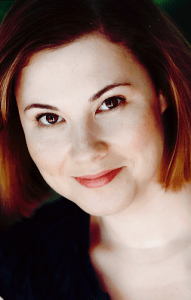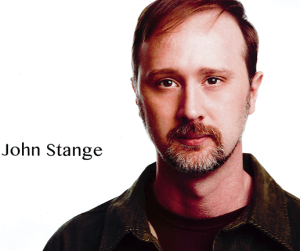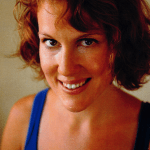With its Small Batch Audience Series created for an especially limited number of patrons per performance, Nu Sass Productions is out to transform the way DC theater audiences experience the performing arts. With its experimental, site-specific approach to producing a challenging Tony Kushner early provocative epic, A Bright Room Called Day, Nu Sass has more than succeeded under the brilliant direction of Angela Pirko.
The Nu Sass production gives off a touchable humanity to Kushner’s script about the failures of the political left in Germany in the early 1930s along with pointed parallels to Reagan era America in the 1980s. We become intimate witnesses; rather than just paying on-lookers, from the moment we take our seats in the smallish upstairs space at CAOS on busy F Street in DC. We become part of an extended family listening closely to ardent arguments about art, sex, life, and most of all, of how the outside world of Germany in the early 1930’s is tightening its grip; leaving little room to maneuver or to take a deep breath.

A Bright Room Called Day is Kushner’s Brecht-like, polemical drama depicting the lives of a group of leftish-leaning friends and artists as the end of the tolerant Weimar Republic nears (think Cabaret) and the ascendency of the Nazi Party is about to take off. The production unfolds through a series of scenes that are connected and explained by well-done projected title cards that give historical facts and narrative.
With a talented, earnest ensemble, interest in what will become of the characters rarely wavers. We focus on a well-meaning, yet conflicted, indecisive Agnes Eggling (a realistic, not artificial performance by Karen Lange) as her apartment is a place of refuge and safety. Her apartment is the place where everyone flirts and discusses their private lives during the relatively open times of the Weimar Republic. Soon enough the arguments lead to a flaying about what can be done as their lives, both private and public unravel as Hitler takes power.
Eggling’s cohorts include an eye-patch wearing Hungarian revolutionary of sharp polemics and who is her lover named Vealtninc Husz (Keegan Cassaday with an alluring, magnetic presence), a gay chum “Baz” (an incisive, persuasive, captivating performance by Erik Harrison), as well as an initially narcissistic actress, addicted to heroin and psychoanalysis named Paulinka Erdnuss (a likable Amber Gibson as she begins to show her strength of character), and painter and Communist supporter Annabella Gotchling (an authentic low-key characterization by Aubri O’Connor).

Others we come to know over time, include the Devil (a playfully sarcastic John Strange) along with two bickering stalwarts of the Communist Party (Amal Saade and Charlene V. Smith) as well as a night-time vision of an older-woman visitor (a strident, cronish Marta Kotzian who arrives from a window). Finally, there is Hannah Sweet as Zillah Katz, a fierce, vocal presence of voice and mannerisms in an unenviable role as a presence from the 1980’s who connects 1930’s Germany with 1980’s America as well as introducing each of the two Acts in her own assertive and chilling way.
As the show progresses and the anxiety level of the Nu Sass production takes holds, the red meat stand-and-deliver lines left me with plenty to chew-on well after the performance ended.
Some of the riper dialogue are these: “What makes the voice pathetic is that it doesn’t know what kind of people it’s reaching. Us. No one hears it, except us.” Or, “there is no reason to relax.”Or “Don’t put much stock in a good night’s sleep; people sleeping soundly are the guys who’re giving the rest of us bad dreams.” Add these as well: “Justice precedes beauty. Without justice, beauty is impossible, an obscenity” and finally this one that caught my attention. “It happens. A whole generation of washouts” (so reminded me of the 1969 movie Easy Rider with its line “we blew it, man”).
The artistic designer clearly worked overtime to transform the CAOS space. Betsy Haibel has made whatever the CAOS normally looks like into a comfortable middle-class apartment in Berlin in the early 1930s. There are arm chairs in what is the playing space with incandescent shaded lamps and some more theatrical lighting when the moments warrant from Colin Dieck. Aaron Fensterheim’s sound design uses mood-setting preshow music with Marlene Dietrich’s husky, sensual voice and then give goosebumps with renditions of Nazi era music and the Communist Internationale and some very well-placed radio static.
Vashti Joseph has dressed the actors in era provoking dresses, suits and working wear. Her costumes depict people who care how they look and their style statement. Becky Mezzanotte has plenty of nicely detailed props touches, including one mean looking sharply point knife. She also did some “deathly” make-up. And remember, the actors are just so close, that things must be right. Things cannot be concealed from view.
One other detail to mention. For those less familiar with the 1930s or ever Reagan’s America (which is now 30 years ago), there is a nifty timeline exhibit and several books for viewing that will answer questions about sundries names such as Hannah Arendt, Hindenberg, Pat Buchanan, the Institute of Human Sexuality, the Comintern, and much more. Karen Rosnizeck is the dramaturg and exhibit builder, as I understand.

There is little tepid in the Nu Sass production of Kushner’s A Bright Room Called Day. It is a gift for those who appreciate and enjoy real-life arguments over issues big and small. It is a gift for those up for a more experimental evening of theater. It is a gift for those who appreciate a passionate and emotional script performed by a well-honed ensemble who are inches away from the audience’s face. It is a gift for those like me who find that the themes and the history depicted resonated even if I wish I could argue with the playwright or ask if current times have affected what he wrote several decades ago. And isn’t that what theater can and should do?
Nu Sass describes the Small Batch Audience Series as plays that will take place in a single room for the entire show. The idea is provide an opportunity to be “with the characters, witnessing the highs and lows from the same perspective.” The concept came from A Bright Room Called Day producers Aubri O’Connor and Angela Kay Pirko (who also directed) who indicated they were inspired by The Tiny House Plays of Pinky Swear Productions.
A Bright Room Called Day is a bold, assertive production that delves beneath the surface of terrible world events through the eyes of a small few characters. These few have to decide whether to stay or go, to fight or fly, to risk or be slient. What we would do in the same situation is left to us to decide. Nu Sass deserves sustained applause for the distinctive manner used to deliver invigorating theater.
Running Time: 2 hours and 45 minutes, with one intermission.
A Bright Room Called Day plays through April 5, 2015 at Nu Sass Productions performing at CAOS on F Streets-923 F Street, NW, in Washington, DC. Tickets are $20. There are only 20 tickets available for each performance. For tickets, purchase them online.
LINK:
Small Crowds, New Spaces: An Introduction to Nu Sass Productions’ Small Batch Audience Series by Aubri O’Connor.
RATING:





